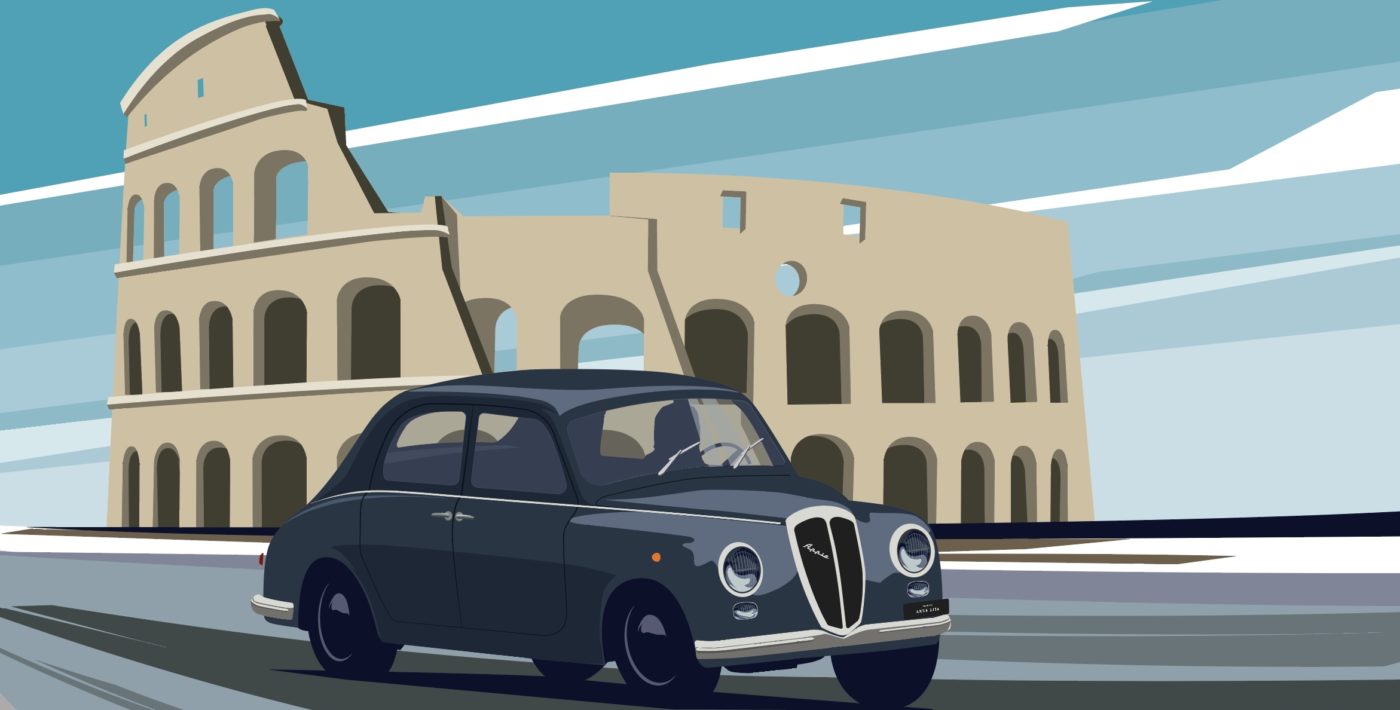
Lancia
Lancia has always held a special place in the history of the automobile, as the brand is forever associated with its innovations, technological refinement and successes in competition. The Lancia name is associated with emblematic models and eras, such as the Lancia Aurelia B24 Spider America associated with the Dolce Vita or the Aurelia B20GT, Stratos and Delta Integrale, which had staggering results in the greatest rallies. Lancia also remains associated with its collaborations with iconic Italian names, such as Zagato or Martini.
The ANNA LISA Art On Wheels collection, whose Italian character is no longer to be proven, could not miss Lancia. Thus, several strong models are part of the collection.The history of Lancia goes back to 1906, when Vincenzo Lancia and Claudio Fogolin, former Fiat engineers, decided to design and produce high-performance and technically advanced cars. These two pillars have remained throughout the history of the brand.
The Lancia Theta of 1913 was the first European car to be equipped with a complete electrical system. The 1920s Lambda, considered as the first Lancia’s masterpiece, was one of the first cars to use a monocoque chassis, rather than a body on a frame. Equipped with an independent front suspension, the car was notably famous for tackling the Mille Miglia race. Two little-known pre-war models are also part of our collection and will be unveiled in the near future.
In the 30’s, the Lancia Aprilia was noticed for its V4 engine, its very modern aerodynamic line, elegance and technical innovations. The little Ardea, born before the war and marketed until 1951 is a direct heir of the Aprilia’s design. Designed by the prolific and gifted engineer Vittorio Jano with Gianni Lancia, who took over the management of the brand in 1937 at the age of only 13, it inaugurated the first five-speed manual gearbox in the world in 1948. The green 1951 Series 4 from the ANNA LISA Art On Wheels collection is an interesting example of such car.
The Lancia sedans, whether the small Lancia Appia that succeeded to the Ardea or its big sister, the Aurelia B22, are also to be commended for their technical sophistication but also for the elegance of their lines with their antagonistic doors, already seen on the Aprilia and Ardea cars. We are therefore proud to showcase our 1955 Appia Series 1 and 1960 Appia Series 3, as well as the superb 1953 Aurelia B22.
The Aurelia was also available as a coupe, spider and cabriolet. In addition to the sedan, the ANNA LISA Art On Wheels collection also includes a 1950 Aurelia B50 convertible designed by Pininfarina. The Aurelia was the first production car to be equipped with radial tires and a V6 engine. Finally, Lancia was not absent from competition and both the Aurelia B20GT and the Appia designed by Zagato distinguished themselves in the greatest competitions. The 1960 Appia GTE sports car from the ANNA LISA Art On Wheels collection was also the first Lancia to be produced by Zagato.
However, the technical sophistication of the cars meant that production was very labor-intensive, which in turn meant high production costs. Lancia had to be bought by Fiat in 1969. This does not detract from the brand’s ability to launch iconic models, in particular the Stratos, of which 500 were produced between 1973 and 1978. This extraordinary sports car, with its very short wheelbase, its angular lines and its formidable V6 Dino engine, enabled Lancia to be world rally champion three years in a row in 1974, 1975 and 1976. It heralds another car that has become iconic, the Lancia Delta, produced from 1979 to 1994, which was crowned with massive success in rallying, with no less than six consecutive Group A World Rally Championship titles between 1987 and 1992.